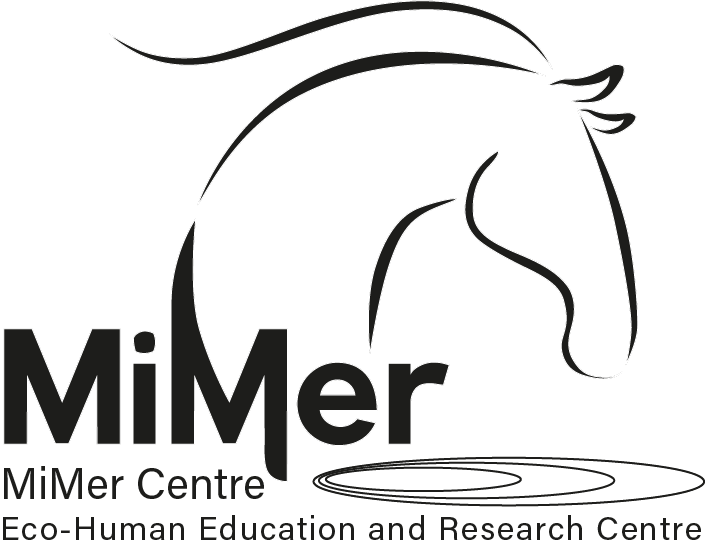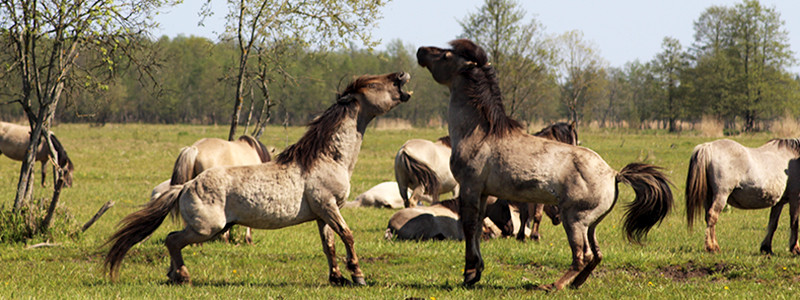COLLIDING MYTHS ABOUT HORSES
It is so easy for humans to put our human ways of being onto horses. Seldom do we even notice it or notice it when others do it. If something sounds like a plausible explanation, we often just take it for the truth. Especially if it fills a gap in our story about horses. We humans don’t like gaps – the human mind always strives to fill the gaps. We do not like “not knowing”. And we like a nice and coherent “story”.
I love the space of not knowing – it is where exploration lives. Where imagination lives. Where experimenting and innovating lives. Where creativity lives…
I like when things are open. When humans are open to multiple ways of seeing and understanding.
Now to the myths…
Myth 1. Horses do not show pain because they are prey animals – if they do – predators will single them out for dinner, as being the weakest in a herd, and therefore the easiest catch.
Myth 2. Horses are always in the here and now – and do not hide anything, and directly show what bothers them. (I could add – they do not ever think about the past or the future and just react instinctively as being part of this myth).
So, horses hide pain, but do not hide anything, but always give direct feedback/answers?
The question is – do they have the ability to hide anything? And if they do – why would they just use it when predators are around? If it is a skill, it is a skill?
If they cannot hide anything – why are we so lousy at reading and understanding them? E.g., seeing when they are in pain? Understanding when they are bored? Etc.? If they are showing everything – they should be like open books? Easy to read?
Generalizing of course – but it is interesting – isn’t it? Can both be true? Or what is going on here? Are the able to hide things, or are the very transparent and honest? Always congruent? (meaning what they feel and their actions are aligning).
I think both questions/statements are more complex than this. It isn’t a clear yes or no – this or that.
Horses are foremost learning animals (as we humans are too – as all animals are). They learn from the contexts and environments they live in, from the experiences they have, they also carry learning in their genes from generations before them. Some learn better than others, but they all learn, all the time…
And – they are super flexible learners, one of the most adaptable species on earth.
I think there is a lack of learning about horses, in humans. And now I am going to say something provocative… I think we trust too much in science and “knowledge”, in facts and “data”. And we spend too much time on book learning, reading articles and attending courses, that gives us these facts, and way too little time being with horses. And I mean not only doing with horses but being with them. Being in the sense of not having a particular goal or agenda when being with them (training them or teaching/shaping their behaviors).
I think there is a very strong correlation between time spent with horses and understanding horses – IF you are not solely focused on teaching/training/shaping the horses.
And it strikes me every time I think about the Mongolian horse nomads that I interviewed 8 years ago, and how surprised they were by many of my questions. Like my question, how do you learn about horses? To them, it was so simple – you are with them, most of your time. And in this way – you learn about horses AND the horses learn about you! This is though, a learning very hard to put into words. It is a felt knowing, a way to intuitively know what is going on. It is a building relationships with the ones we encounter – honoring everyone’s different ways of being and their different qualities.
As a lover of experiential learning. Having experiences with horses, where it is not about teaching them/training them – and then reflect on what you saw, conceptualize it (perhaps) and then go out again and be with them – this cycle with bring you a lot of insights, a lot of felt knowledge, that you maybe will find some good words for… words that align with YOUR learning and SEEING.
Read the books, go to the courses, keep yourself updates on the science, but do NOT forget that spending time with horses – is crucial for your understanding of them.
I see the books and the courses more as a help to un-learn. To unlearn all the crap most people have learned about horses growing up in different “horse environments”.
Sorry (but not sorry), for this directness. Bluntness perhaps? I am not out to offend anyone, but sometimes I struggle a great deal with all that I see and hear about horses, all the statements that are “out there” – horses are this, horses are that, they can do this, cannot do that, feel this, say this with their behaviors, signals, faces, etc., etc..
They do say a lot – all of the time, of course. They communicate a lot! But we have not immersed ourselves in their language. We do not understand their cultures. We miss the essence of them.
We know this from other areas of learning. Try to learn a new language without being in contact with it? Try to learn about a new culture without experiencing it? Try to learn to dance by reading a book about it? (or to ride for that matter).
Don’t confuse the learning with the learning aids.
If you want to understand horses – you need to get out and be with them, a lot, with an open mind and with less need to control them, teach them, train them…
I believe in the art of observing. By observing I mean this immersive way of being – where you soak up what is around you and respond to it out of yourself. Where you stay true to your emotions – and do not do anything to look in a specific way. Sometimes it is done at a distance from the horses, it isn’t – actually often – is not about how close you are to them. I think when we become a natural part of their environment, just being there is when you learn the most.
I think the hiding we see in horses is a human projection. I also think the not hiding also is. I think horses have their own reasons for what they do. And that will shift according to so many variables. And being with them, observing them, not coming to them with all your knowledge, but feeling them – and spending a lot of time discerning what you feel from what they feel. Are some ways to get to understand them better. It is a dialectic dance – between staying with yourself, being self-aware and seeing openly – and letting” the other” show themselves, from their point of view, from their frame of reference. As soon as we go in and direct anything – we break our own seeing (and our own true being).
Being directive is sometimes necessary, but we are sooooo directive – we humans. I am not saying do not take up space. If that is what comes to you when you listen to you, do that. But also – keep your eyes and all your other senses wide open. Do not decide what it is you see when you see it. Just monitor what comes up in you. Stay in the experience. Reflect afterwards. Take your time to conceptualize (if that is a need).
There are sooo many colliding myths about horses out there – my head spins from it. I see so many blanket statements about them. And I keep from commenting, most of the time. Often, I perceive there being very little room for this “other way of knowing” – the felt knowing.
My general answer to most things horsey is, go out and be with them – not always focused on any sort of traditional interaction. Just try to see what you see, sense what you sense. And do not focus on getting your needs met! That too puts loads of lenses on what you see. Or if you send out other people to horses to have their needs met. You will not see clearly.
This is my opinion. I have no need to be controversial. Or to be provocative. I am just sharing something that has been on my mind a long, very long time. And I am sure I am not wording this particularly well. But this – with these two myths – I am trying to highlight what I mean.
Ask yourself – are humans hiding pain? Is it actually more of a human thing to do? Can humans hide pain (e.g.) – or do we just think we can? How does our pain come out when we think we are hiding it? Or any other emotion/emotional experience.
Is the concept of hiding anything – a human concept? An adaptation more to how we live in our societal structures? To what is anticipated and demanded of us – to be “mature” and grown-up?
Contributing to our preferences often – to not see? Even sometimes making us clearly blind?
Un-learning – leads to un-blinding. And to more seeing – as things, being are. And it is not always so easy. But in my experience – brings a lot of peace, joy, a felt sense of grounding and anchoring in oneself – which is promoting more and clearer seeing.
I do really think science have an important place in helping us understand more about horses. It is a fast and easy way to learn about their digestive system e.g., a hugely important knowledge to have – to be able to provide them with some fundamental welfare. I just wish there would be a more balanced view on how we acquire knowledge and learning about horses. Contemporary science is, as I see it, just one part of that learning. The rest of the learning, is experiential, hands–on, practical learning – so we become able to “see” them properly.
Picture from Kemeri National Park in Latvia. What do you see?
Text and Pictures are copyright protected © Katarina Felicia (Ally.) Lundgren, MiMer Centre, 2023
When you subscribe to the blog, we will send you an e-mail when there are new updates on the site so you wouldn't miss them.


Comments